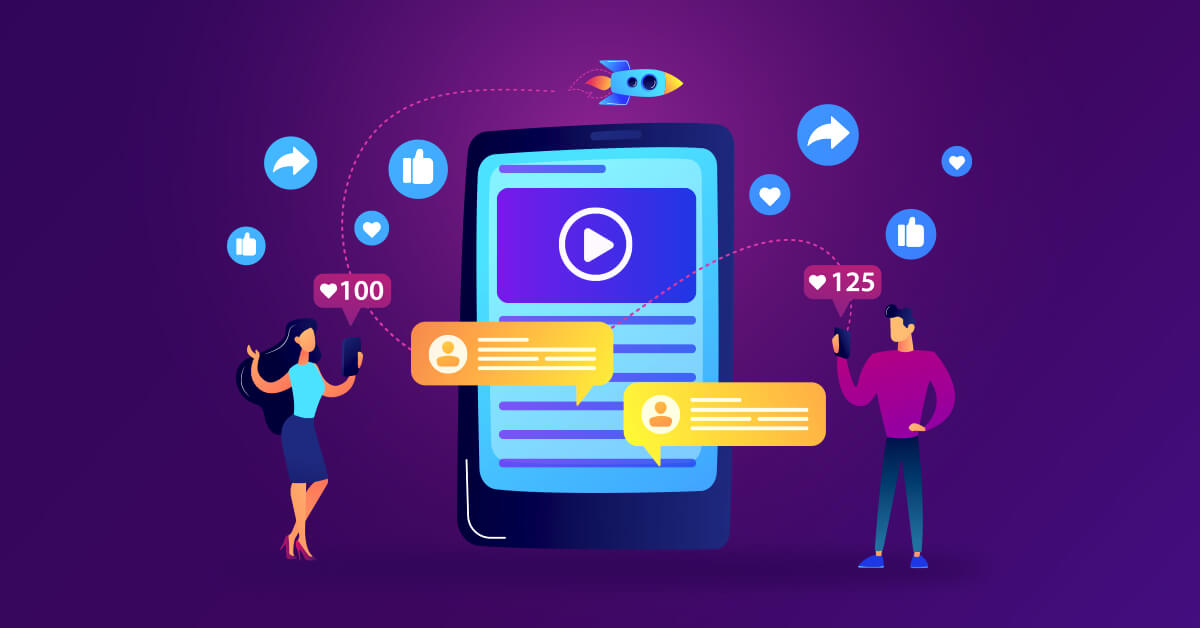In today’s fast-paced digital era, mobile devices have become an inseparable part of our lives, revolutionizing how we connect, communicate, and consume information. Harnessing the power of mobile marketing can unlock many opportunities for businesses seeking to expand their reach, engage their audience, and boost their bottom line.
Considering that over 80% of mobile users are engaged with their devices for more than 170 minutes daily, a strong marketing presence optimized for mobile devices becomes a crucial goal for brands seeking online growth.
In this article, we will explore the top 6 advantages of mobile marketing and how it can propel online business growth for you.
#1. Immediate Reach Beyond Larger Devices
Imagine this scenario: you’ve meticulously crafted your online marketing messages, carefully selecting every word and detail. However, when these messages are sent to desktops or laptops, they may languish unnoticed for hours, or even days, before catching the consumer’s eye. Enter the game-changer: smartphones. These pocket-sized powerhouses have revolutionized consumer behavior, presenting a golden opportunity for businesses to leverage mobile push notifications.
Picture this: a news app that swiftly sends out real-time, impactful updates, keeping users at the forefront of breaking news. Or imagine a retail store announcing an exclusive, one-day sale that instantly piques the interest of potential shoppers. Mobile push notifications are the secret sauce that bridges the gap between businesses and consumers, ensuring timely and relevant engagement that can make all the difference in a world that thrives on instant gratification.
#2. Leverage Location Based Marketing
With mobile marketing, one powerful tool in your arsenal is the magic of location services. In today’s smartphone-driven world, these services hold immense potential because, let’s face it, people are inseparable from their beloved devices.
That’s where geofencing steps in, like a digital guardian angel, ready to unleash a world of tailored notifications, enticing alerts, and exclusive offers when a device sets foot in a specific location. Imagine being at a thrilling sports stadium or a bustling shopping mall, and suddenly, your phone buzzes with a personalized message that feels as if it were crafted just for you.
This is the beauty of location targeting – it transforms your marketing message into something personal, laser-focused, and impossible to ignore. A mind-boggling 70 percent of mobile campaigns by quick-service restaurants have harnessed the power of location.
#3. High ROI and Cost-Effective
Mobile marketing stands out from the crowd regarding cost-effectiveness compared to other marketing methods. Mobile marketing offers a budget-friendly alternative, unlike print, TV, or outdoor advertising, which come with hefty production and purchase costs. Its precise targeting capabilities ensure that every dollar you invest goes the extra mile. With an array of channels, you can select the ones that align with your budgetary constraints.
For instance, Domino’s introduced a multi-channel mobile strategy allowing customers to place orders through various digital platforms, including their website, mobile app, and social media platforms like Twitter and Facebook Messenger.
By embracing mobile advertising and leveraging these convenient ordering channels, Domino’s experienced extraordinary results. The company witnessed a substantial increase in customer engagement and order volume, significantly boosting its overall sales and revenue. Domino’s reported that over 60% of their orders were placed digitally, with a significant portion coming from mobile devices.
#4. Mobile Marketing is Omnichannel Marketing
Mobile marketing seamlessly integrates various channels and devices to deliver a cohesive and personalized customer experience. From custom experiences via apps to simple text messages with a 98% open rate, your mobile advertising approach should be omnichannel.
Statistics show that most consumers engage with brands through multiple touchpoints, emphasizing the need for a unified marketing strategy. A study revealed that 82% of smartphone users consult their phones in-store to make purchasing decisions.
This demonstrates the interconnectedness between mobile devices and physical retail environments. The Starbucks Rewards program is an excellent example of mobile marketing embracing an omnichannel strategy. Through their mobile app, customers can order and pay ahead, earn rewards, and seamlessly redeem them in-store and online. This integration of mobile, online, and in-store experiences showcases the power of omnichannel marketing in fostering customer loyalty and driving business growth.
Mobile marketing is the immediate linchpin connecting various channels, providing a consistent and immersive brand experience across multiple touchpoints.
#5. Quick Shareability and Potential for Virality
Virality in mobile marketing hinges on the intertwined nature of sharing content from social media and other communication channels. The path to viral success often lies in presenting a fresh perspective on current events, injecting a dash of well-placed humor, or simply delivering something incredibly out of the ordinary.
Mobile marketing carries a very high potential for your content to go viral.
Take the Ice Bucket Challenge, for instance. This remarkable campaign saw a staggering 2.4 million videos flooding Facebook, capturing the attention of 28 million individuals who couldn’t resist engaging with, sharing, or commenting on these ice-bucket-related videos.
#6. High Level of Personalization
As a savvy marketer, you know that personalized messages hold the key to capturing consumers’ attention and spurring them into action. A recent survey conducted by a prominent digital marketing and analytics agency unveiled a fascinating insight: 7 out of 10 consumers strongly prefer content and ads customized to their specific interests. This is where mobile marketing truly shines.
But it doesn’t stop at tailored content alone; even push notifications can be personalized to perfection. Collecting user-permitted data makes segmenting users a breeze, paving the way for robust and targeted campaigns. Take, for instance, the ingenious approach adopted by Toyota USA.
They crafted an astonishing 100,000 unique video advertisements for a hybrid vehicle, each carefully personalized to cater to the viewer’s taste. These personalized ads were meticulously tailored using insights gleaned from Facebook, resulting in unparalleled relevance and resonance with the intended audience.
Your Turn to Use Mobile Marketing
Mobile marketing is a powerful tool that propels your business to unprecedented success. With its precise targeting capabilities, cost-effectiveness, and ability to provide a personalized customer experience, it’s a must-have for any brand seeking online growth.
FAQs
What is mobile marketing?
Mobile marketing is a marketing outreach strategy that leverages mobile devices such as smartphones or tablets to communicate with potential customers. This can include a number of strategies including mobile-optimized websites, mobile apps, SMS messaging, push notifications, and more.
What are the four types of mobile marketing?
The four main types of mobile marketing are SMS marketing, in-app marketing, mobile web marketing, and mobile app marketing. Each type utilizes a different platform or method to reach and engage mobile users with a brand’s message.
What is the business value and advantages of mobile marketing?
Mobile marketing offers businesses a wide range of benefits, including immediate reach, location-based marketing, cost-effectiveness, and the ability to provide a personalized customer experience. Mobile marketing can also help brands increase customer engagement, drive sales, and build customer loyalty.
What steps must a company take to start implementing a mobile marketing strategy?
To implement a mobile marketing strategy, a company should define its goals and target audience. From there, it can develop a mobile-friendly website or app, create a database of mobile users, and develop a plan for engaging with those users through channels such as SMS messaging or push notifications.
What are some mobile marketing best practices?
Mobile marketing best practices include:
- Having a mobile-responsive website.
- Utilizing push notifications and SMS messaging responsibly.
- Providing personalized content.
- Embracing an omnichannel marketing strategy.
Check out the blog post above for more information on mobile marketing best practices.













